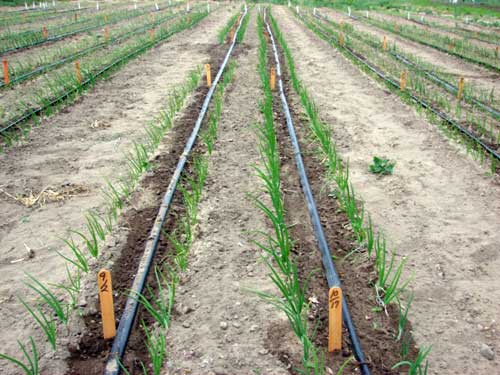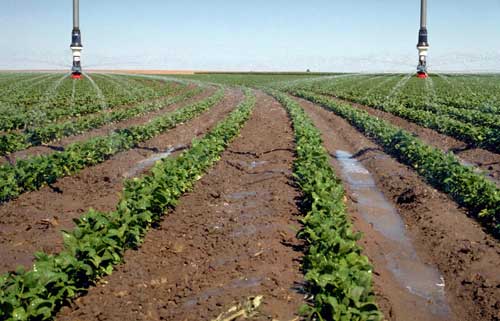Irrigation and disease development in Michigan vegetables
Irrigating high value vegetable crops is necessary for many producers. Using irrigation systems properly is important for water conservation, economic efficiency and disease control.
The dry conditions experienced in 2012 point out how critical irrigation is in reducing risk when producing high value vegetables. Even with dry conditions, growers were surprised at how much disease they encountered. Improper irrigation can create situations conducive for disease development, but a little fore thought can go a long way and allow you to provide water while minimizing disease-promoting conditions.
Many soil borne diseases rely on wet conditions for development, transmission and movement. Conditions promoting soil diseases can occur with improper irrigation. Rapid water application to clay-based soils leads to water runoff and disease movement within and possibly between fields. Clay soils should be irrigated slowly and for long periods to allow water to penetrate and for soil to adequately absorb moisture throughout the root zone.
Many raised bed, plastic mulched, drip irrigated vegetable plantings are placed in sand-based soils. The high sand allows for easier shaping, but is prone to leaching. Irrigation on these soils needs to be done in frequent, quick applications, perhaps more than once a day. Long periods of free water contribute to disease development and it doesn’t take much water in these soils to reach field capacity and create favorable conditions. Growers with these soils often over-irrigate, contributing to nutrient leaching and disease development and spread. In sand, water can move down to soil depths of 20 inches in an hour; irrigating longer than this is unnecessary since it would be pushing water out of the root zone and adding free water.

Drip irrigation in onions. Photo credit: Ron Goldy, MSUE
Proper timing of overhead irrigation is important for keeping diseases in check. Many fungal diseases require eight to 14 hours of a continual wet period for spore germination. If plants are irrigated in the evening, they will stay wet long enough to meet these requirements. Growers need to avoid evening irrigations and should apply overhead water early in the morning when plants are already wet from morning dew.

Overhead irrigation in beans. Photo credit: Howard F. Schwartz, Colorado State University, Bugwood.org
Drip irrigation is always preferable to overhead simply because drip does not wet leaves and it can be operated at any time. However, some crops such as corn, beans, carrots and others do not lend themselves well to drip. Organic soils are also overhead irrigated since the entire surface needs to be kept wet to limit soil movement.
Contact your local Michigan State University Extension county office for more information on irrigation designs and water use information.



 Print
Print Email
Email

